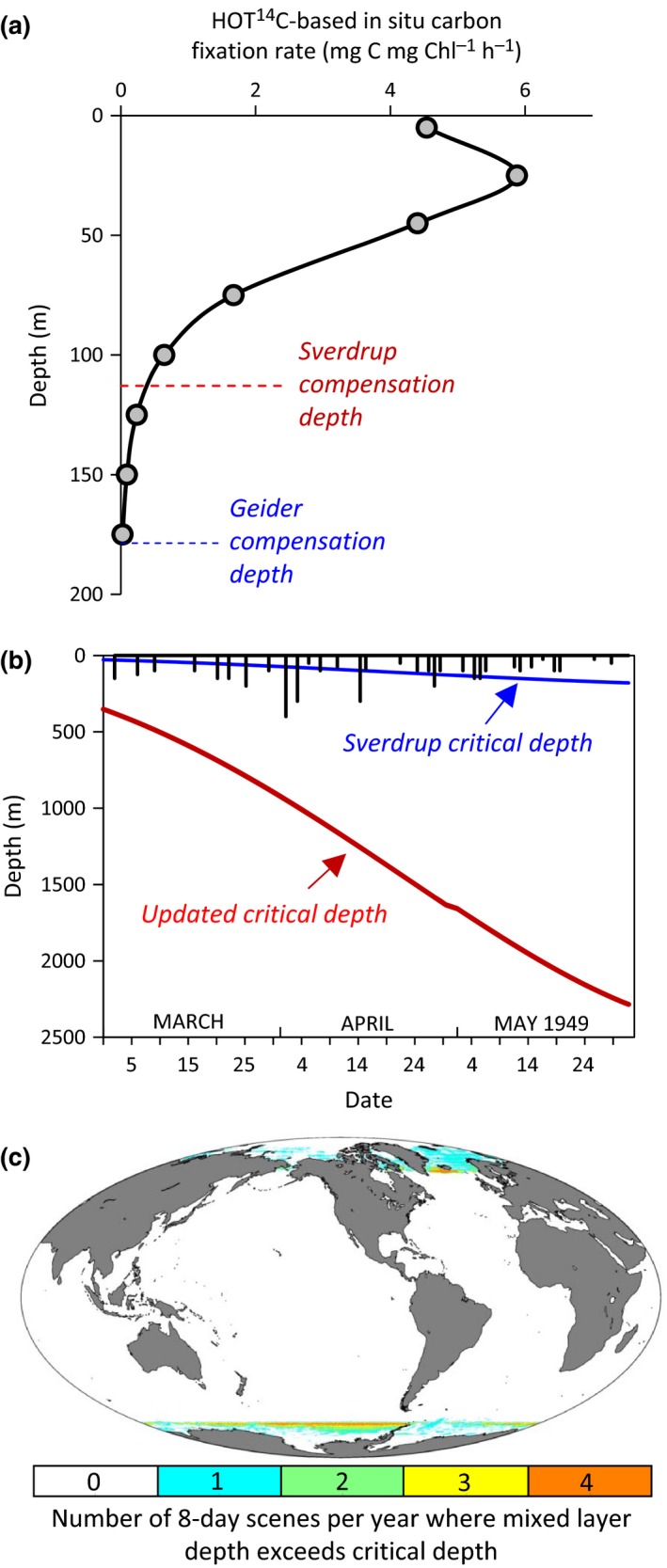Figure 4.

Modern compensation depths and critical depths. (a) Productivity and compensation depths for an example stratified water column measured at the Hawaii Ocean Time‐series (HOT) site. Black line, gray symbols = 14C uptake rates−dark‐bottle values for samples from the surface to 175 m. Blue‐dashed line = compensation depth based on Geider et al. (1986) where daily irradiance is 0.044 mole quanta m−2 day−1 (see text). Red‐dashed line = compensation depth based on Sverdrup (1953) where daily irradiance is ~0.6 mole quanta m−2 day−1. (b) Updated critical depth values for Weather Station “M” from March through May 1949. Vertical black lines = mixed layer depths reported by Sverdrup (1953). Blue line = critical depth values for Sverdrup's compensation irradiance of ~0.6 mole quanta m−2 day−1, a diffuse attenuation coefficients of 0.10 m−1, and a cloudiness index = 7.5 (same as solid blue line in figure 3). Red line = critical depth values calculated using a compensation irradiance of 0.044 mole quanta m−2 day−1 (Fig. 4a, see text), a diffuse attenuation coefficient of 0.10 m−1, and a cloudiness index = 7.5. (c) Global assessment of the number of 8‐day scenes per year when mixed layer depths (taken as the depth where density is 0.030 kg/m3 greater than the value at 10 m) exceed the critical mixing depth (based on a compensation irradiance of 0.044 mole quanta m−2 day−1). Values in polar regions exclude days of polar night since mixing depth is irrelevant to the ability of phytoplankton biomass to increase. Results are average annual values for the period 2003–2015 and based on 8‐day MODIS Aqua diffuse attenuation coefficients and cloud‐corrected incident photosynthetically available radiation and mixed layer depths from the HYCOM model (source: https://hycom.org/). To extend satellite fields beyond the limit of seasonal coverage at high latitudes, we assume values for PAR of 1 mole quanta m−2 day−1 and diffuse attenuation coefficients for PAR of 0.045 m−1
